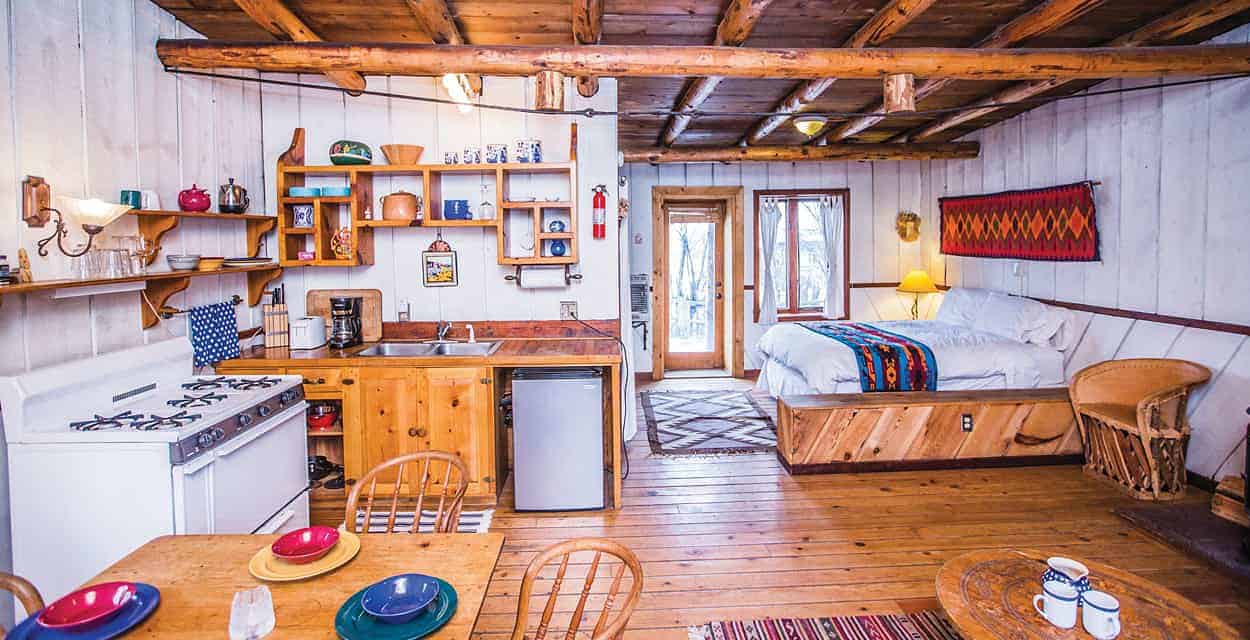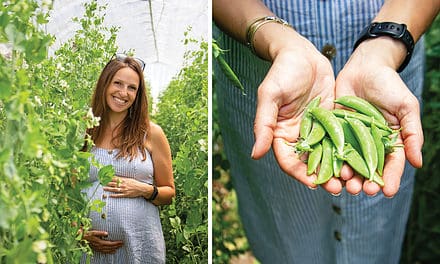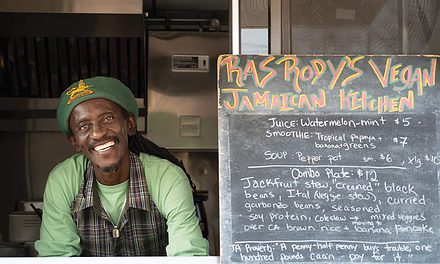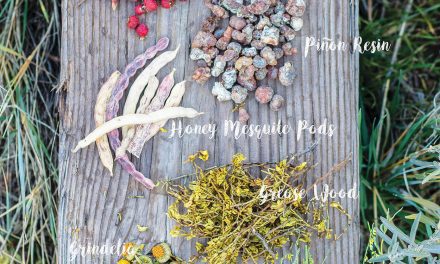Country Comfort at Taos Goji Eco Lodge
By Candolin Cook

A dozen miles north of Taos, nestled in the Sangre de Cristo mountains, sits a destination rooted in agriculture and steeped in history. Taos Goji Eco Lodge is an inn and forty-acre farm boasting an unusual crop, rustic charm, and cozy accommodations. For more than a century, visitors and residents have found inspiration in the bucolic beauty and gentle pace of this property, which both lends itself to productivity and encourages guests to stop and smell the berries.
Last fall I arrived at Taos Goji Eco Lodge as a grad student on the verge of a nervous breakdown. Overwhelmed by my impending comprehensive exams—in particular a grueling, three-hour, oral assessment sure to give any academic an acute case of imposter syndrome—I was in desperate need of a study retreat. Taos Goji met all my criteria: remote but accessible, a quiet, comfortable space where I could focus and organize six years’ worth of US history courses, readings, and research. The patchy cell phone service was a plus.
Lodging on the organic fruit and vegetable farm consists of ten cabins ranging from quaint studios to a three-bedroom home, and two “glamping” tipis. In earlier incarnations, the El Prado property acted as a nineteenth-century sheepherders homestead, a trading post and post office, and a retreat for artists and writers in the early twentieth century. Several of the cabins are named after the property’s most famous visitors—D. H. Lawrence, Frieda Lawrence, Dorothy Brett, Georgia O’Keeffe, and Aldous Huxley, who is said to have written one of his early novels there. Other features include a sixteen-hundred-square-foot open barn for weddings and events, Japanese soaking tubs, walking trails, creeks, and ponds. On my trip last fall and a subsequent visit this spring, I stayed in the Huxley cabin—a bright, spacious studio with a full kitchen, dining and living areas, wood-burning stove, enclosed back garden, and antique decor, including a sepia-toned portrait of the famed British writer.
With hummingbirds and butterflies fluttering above, the farmstay’s communal picnic tables and shaded hammocks proved particularly lovely spots for reading about the Gilded Age. On study breaks, I could decompress by visiting with the farm’s menagerie of adorable lambs, goats, alpacas, guinea hens, turkeys, and chickens—who provide fresh eggs for guests—or by meandering through the organic pumpkin patch, apple orchards, and namesake goji berry fields.

Gojis, or wolfberries, are small bright red fruits native to China. Their tart flavor is similar to a cranberry, and often, in the US, we will see them in dried form, which intensifies their sweetness. Long used in traditional Chinese medicine, the antioxidant-rich goji berry has more recently become popular in the States, thanks to its mediagenic designation as a “superfruit.” Taos Goji Eco Lodge proprietors Elizabeth and Eric vom Dorp did not begin cultivating gojis in 2008 because of any health trends, but because Elizabeth missed cooking with the fresh berries she used to easily procure in her native Sweden.
“I couldn’t find them anywhere,” she said when we toured her four and a half acres of goji shrubs. “But then we discovered gojis are well-suited to the environment here.” The vom Dorps have sold their gojis at farmers markets in Taos and Santa Fe, but more often eat what they grow and sell or give away excess to neighbors. This summer, however, the couple will use their harvest to create a line of goji berry skincare products and goji leaf teas to sell locally and online. The high-concentration of vitamins and antioxidants found in the berries is said to be beneficial to skin tone and elasticity. The leaves also contain antioxidants and are high in flavonoids, which studies suggest help lower blood pressure. “The leaves are also just great stir-fried with a little butter and garlic,” said Elizabeth.
On my last morning at Taos Goji, I joined the vom Dorps for breakfast in their main cabin, a lovingly restored log and adobe building which now serves as a communal dining area, event space, and cafe for guests. Eric had prepared a heaping platter of Swedish pancakes—tender and paper-thin—which I topped with the traditional accoutrements of sour cream and fresh fruit, as wells as preserved goji berries from last year’s harvest. Breakfast and lunch at Taos Goji are available upon request, and always shared family style with the vom Dorps and their WWOOFers—temporary, volunteer workers who come from all over the globe through the World Wide Opportunities on Organic Farms program. “We couldn’t really do this without them,” Eric said. “There are countless projects: fixing fences, chopping wood, pruning trees, harvesting vegetables . . . it’s never done.”
Shortly after breakfast, when leaving the farm by the narrow dirt road lined with cottonwoods and elms, I passed Eric, already knee-deep in an irrigation ditch, shoveling away in the late morning sun. Certainly, a lot of hard work happens at Taos Goji, but plenty of leisure does, too; and after a long weekend of hitting the books (and nearby hot springs) I felt ready to take my exams. From world travellers to honeymooners and literary luminaries to stressed-out doctoral students, this hidden gem of northern New Mexico is ideal for anyone looking to get things done or to simply get away.
1530 and 1528 Old State Road 3, San Cristobal, 575-776-3971, taosgoji.com
Edible celebrates New Mexico's food culture, season by season. We believe that knowing where our food comes from is a powerful thing. With our high-quality, aesthetically pleasing and informative publication, we inspire readers to support and celebrate the growers, producers, chefs, beverage and food artisans, and other food professionals in our community.

















